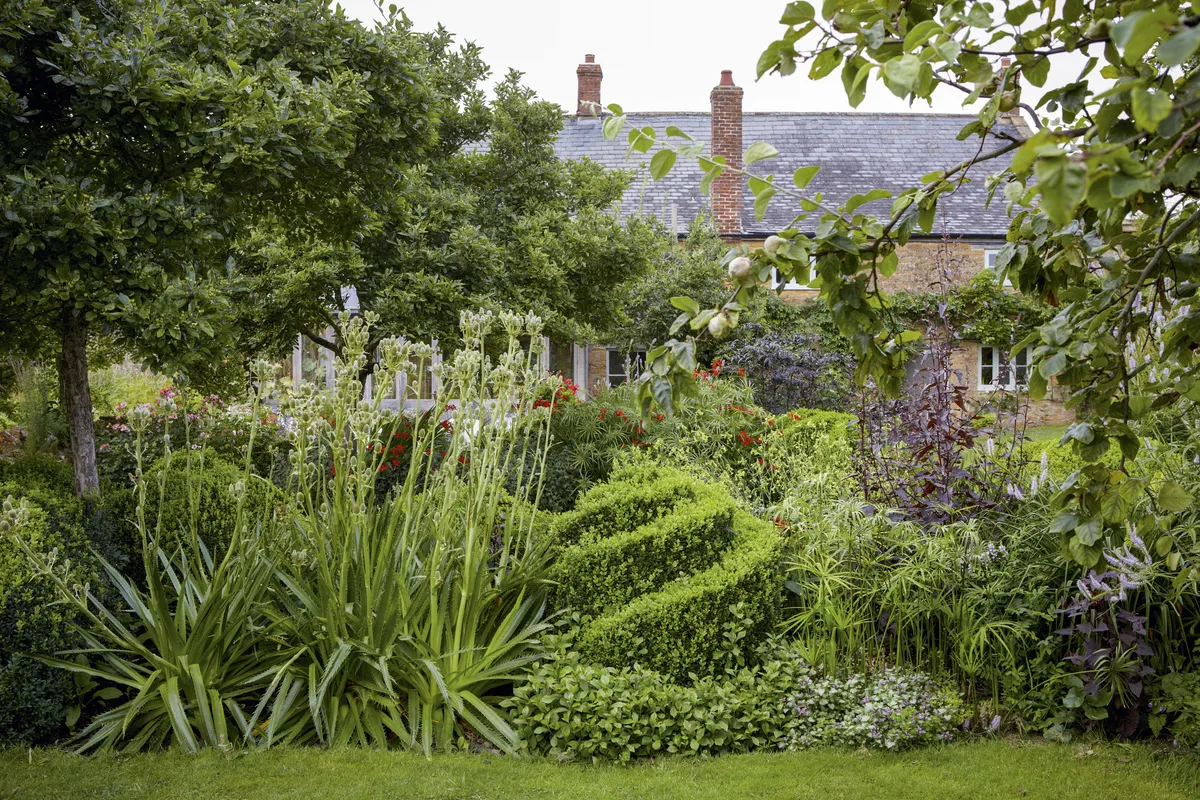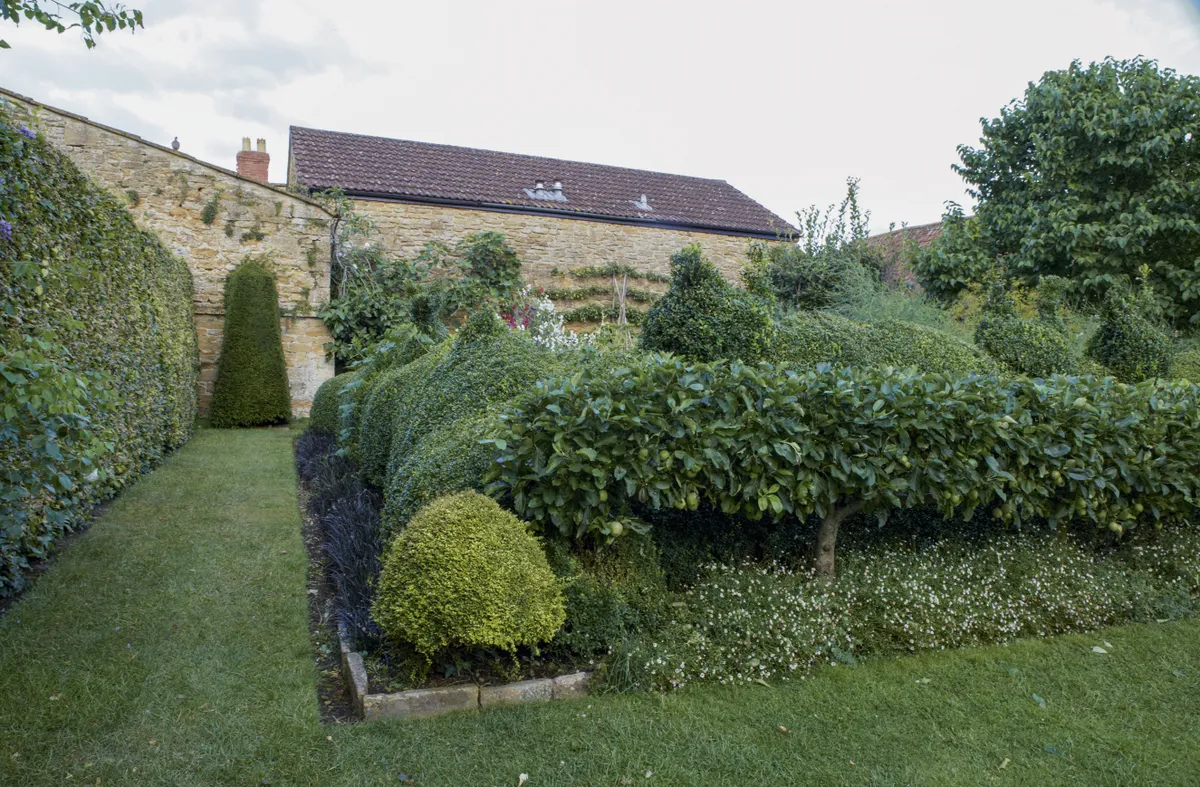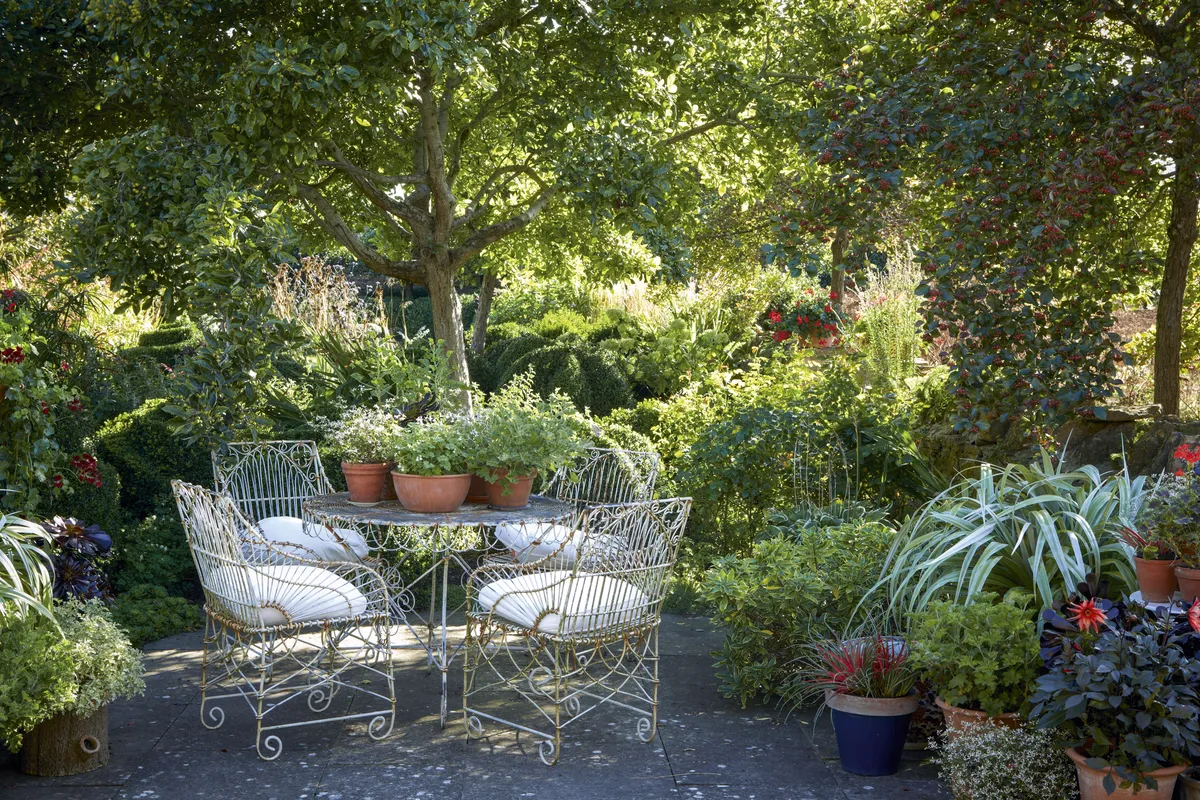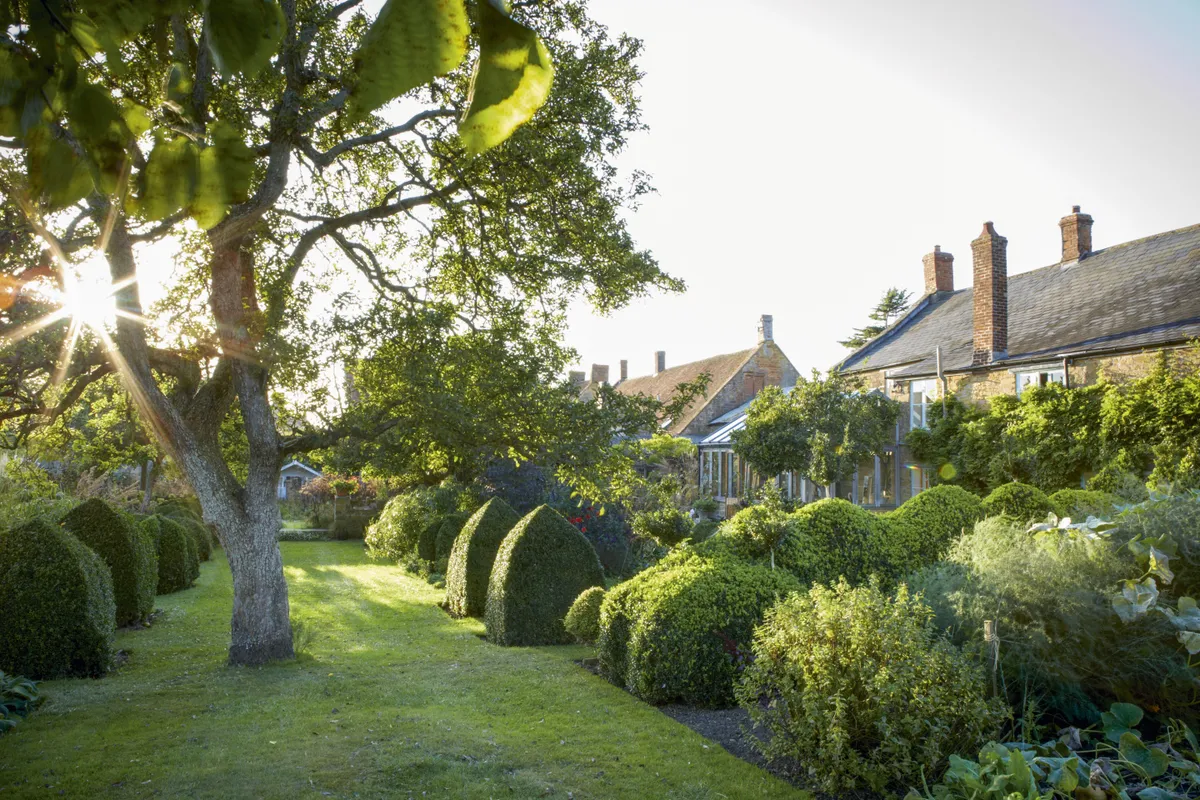IN BRIEF
What Walled, topiary garden with cottage garden planting. Where Somerset. Size A quarter of an acre.
Soil In an area of grade 1 agricultural soil, but over an old farmyard in parts, so very shallow. Climate Hot, south-facing garden with low rainfall. Hardiness zone USDA 8.

When Louise Dowding and her husband Fergus arrived at Yews Farm in Martock on the Somerset Levels in 1996, the garden was very different. “It had those wiggly ‘hosepipe’ borders all around the edges, which I’m not so keen on, because it leaves an empty space in the middle where you could have plants.” Louise studied garden design at Kingston Maurward College and spent two years working as an assistant to Penelope Hobhouse at Bettiscombe before starting up her own practice, and so she is not short on garden ideas. She knew immediately what she wanted to do, and set about putting it into place. “I ripped everything out except for an old pear tree and started again,” she says. Louise’s layout for the garden took almost the opposite approach to her predecessor’s: a cross shape of wide borders right down the centre of the garden, borders around the edges with wide, grass paths between them but no stretch of open lawn. It made the most of the strong structure of old walls that surround this former farmyard.
This farmyard legacy made itself known almost immediately, when the couple found that a large part of the garden was laid directly over the stone yard, with just a foot of soil covering it. “This is a sunny, hot, south-facing garden anyway, and there was no way we could take up all that stone. I had to find plants that could cope with shallow soils.” This narrowed down her options for the new garden. “Roses don’t do well here, though we have sneaked in a few at the edges where there are deeper pockets of soil, but hawthorns do brilliantly, as does Euphorbia oblongata, which seeds itself everywhere. Salvias, crocosmias and the Mexican daisy Erigeron karvinskianus are all really successful in our hot, dry conditions.” Most importantly, box thrives here and quickly became central to the entire layout of the garden. “I knew I wanted to establish a strong structure straight away,” says Louise, “so I started planting little, 30cm edging plants all through the borders, with the aim of growing them into box balls – 26 years later and they are nearly finished.” She keeps them healthy by regularly spraying with a seaweed fertiliser.

Despite having such strong ideas from the start, Louise did take some missteps. “My original idea was to have the box shapes surrounded by lots of ornamental grasses waving in the breeze, and so I planted them all over, but they were just so disappointing. I knew almost at once that it was a mistake. For five months of the year they didn’t do anything and they didn’t like our conditions.” She dug the lot out just three years later and thought again. “I wanted architectural planting. I’m not really a flower person; it’s shapes I am looking for.” She particularly loves the sword-like leaves of crocosmia, the airy, filigree uprights of Cyperus alternifolius subsp. flabelliformis and the green spikes of Eryngium agavifolium. “If you choose perennials with good shapes, it doesn’t matter if they are in flower or not. They provide structure all season long.”
There is some colour in the garden, although Louise tends either towards bright but small pinpricks of orange and red – from Crocosmia ‘Lucifer’ and Dahlia ‘Bishop’s Children’, for example – that do not threaten the green overall look, or stormy, grey-blues with the likes of Salvia chamaedryoides and Verbena officinalis var. grandiflora ‘Bampton’. “Blues are quiet,” she says. “They sit there and don’t grab the attention.” Which means that above all they don’t distract from her beautiful box plants, the stars of the show.

The box shapes themselves have undergone a transformation as they have reached maturity, and are far more complex than she originally envisaged them. “They were box balls, and one day Fergus was looking out at them and said, ‘They’re so boring’, and they were. They were too big and too heavy for the rest of the planting.” She set about cutting them into different shapes, some into spirals and others with strong, horizontal segments, while Fergus’s vegetable garden – the only part of the garden not built over the stone yard – boasts a wavy hedge topped with a parade of topiary hens and snails. “They look so much better now. The light plays on the horizontals and verticals so much more than it did when they were balls,” says Louise. It is in the late summer evenings that she appreciates them the most. “All of the hard work with the box takes place in early summer. It is manic around early June, trying to get around it all. But by late summer the box is looking good and everything has filled out around it. At dusk the shapes seem to double in size and they look almost animated. They have a massive presence. I love them.”
USEFUL INFORMATION
Address Yews Farm, East Street, Martock, Somerset TA12 6NF. Tel 01935 822202.
Open 12 September, 2-5pm, for National Garden Scheme (ngs.org.uk); otherwise group visits for 20 or more people by arrangement (email fergus.dowding@btinternet.com).








